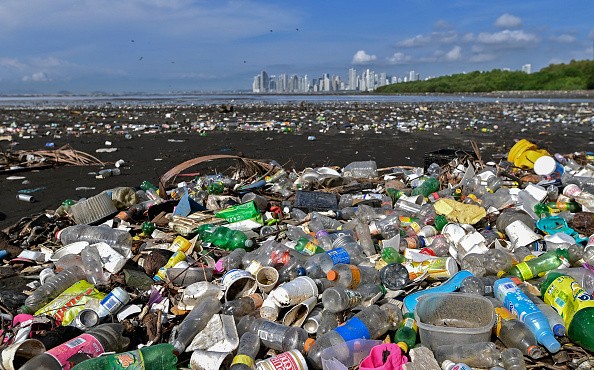Every year, large amounts of plastic find themselves in rivers and oceans, causing harm to the environment and human health. But what if it could be pulled out of water with magnets' power?

Plastic Waste
Growing up, Fionn Ferreira spent a lot of time exploring the coastline close to his hometown called Ballydehob in south-west Ireland. But the more he spends most of his time on the protected, shingle-strewn coves close by, he became more shocked by the huge amounts of plastic waste he saw scattered across both the beach and in the sea.
He said: "It didn't look nice to me - the coloured bits of plastic all along the shore."
All over the world, humans generate approximately 300 million tonnes of plastic waste yearly, and not less than 10 million tonnes find themselves in our oceans - comparable to a truck load of waste each minute.
But what really concerned Ferreira was the plastic he couldn't see. Microplastics are pieces of materials tinier than five millimetres and are either directly from the products humans use or are produced as larger plastic objects disintegrated in the environment.
They are everywhere - they have even been discovered at the base of the deepest ocean trench in the world and lodged in Arctic sea ice.
Where can Microplastics be Found?
Ferreira, who is currently 20-year-old and studying chemistry at Groningen University in the Netherlands said: "I got really anxious when I found out about microplastics. These plastics are going to be in our environment for thousands of years. We are going to be dealing with them long after we stop using plastic."
As he got more knowledge about the impact microplastics has on the environment, Ferreira started searching for ways to fight them. And his unexpected finding on his local beach gave him the inspiration for a new way to get rid of these tiny, ubiquitous plastics from rivers.
Microplastics can be found in our cosmetics, clothes, and cleaning products. An average of 700,000 microplastic fibres can be produced from one load of laundry. Not more than a millimetre in length, these fibres find their way into water bodies, and there fish and even corals eat them. Due to their minute size, microplastics can penetrate filtration systems, and this makes it very hard to avoid them.

The Discovery
In a 2018 study, plastic contamination can also be seen in bottled water, with 93% of 259 bottled water samples having microplastics.
As per recent research, humans often breathe in and ingest microplastics in the course of their daily lives. A 2019 study carried out by researchers at the University of Newcastle discovered that all around the world people take in an average of 5g of plastic weekly, comparable to a credit card. The effect this intake of microplastics has on our health is still not well understood.
Ferreira combined vegetable oil with iron oxide powder in order to make a magnetic liquid, also called ferrofluid. Then he blended in microplastics from different everyday items like paint, plastic bottles and car tyres, and water from laundry.
After the microplastics merge into the ferrofluid, Ferreira made use of a magnet to get rid of the solution and leave only water behind.
Ferreira's method was 87% effective at getting microplastics out out water after 5,000 tests.
Related Article : 20 Companies are Responsible for 55% of the World's Total Plastic Waste, Report Shows
For more news, updates about microplastics and similar topics don't forget to follow Nature World News!
© 2026 NatureWorldNews.com All rights reserved. Do not reproduce without permission.





